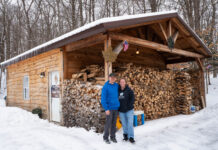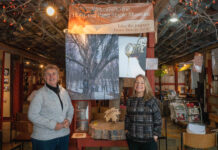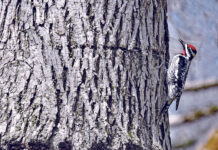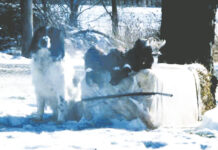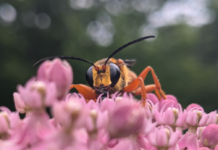Leave a porch light on one warm summer night and you will either be dazzled or disgusted by the creatures that fly in for a visit. From May to October, we avoid going out our front door at night to reduce the number of nocturnal flying insects that fly in uninvited to our home. In the southeast corner of Ohio, the biodiversity of critters found chilling on the front door and fluttering around the porch light have brought joy and wonder along with fear and furry to get through the door without a fleet of invertebrates coming along. Of the many insects available for viewing, the most common by far are moths.
Moths are among the most diverse groups of animals on Earth. Over 160,000 species are recorded globally and over 3,000 species are known to live in Ohio. All are nocturnal and all start as caterpillars feeding on plant material. From dull brown to brilliant pink colors and patterns, moths of Ohio are fascinating and important to the ecosystem as pollinators and a primary food source either as caterpillars or as adults for bats, birds, and spiders. While most moths are considered beneficial organisms, some are considered major agricultural pests in their caterpillar stage.
Moth questions
OSU Extension has recently had a couple questions come through our system about moths in stored hay. Although the occurrence of moth infestation in hay is uncommon, it can happen. The initial discovery of a moth problem can be unsettling, but it is unlikely that the presence of the moths will cause ill effects to the animals consuming the hay. Rather, the manager who makes the discovery should carefully evaluate they hay and surrounding stored feeds for the presence of larvae and/or spoilage of the feed.
In the case of both the Indian meal moth (Plodia interpunctella) and clover hayworm moth (Hypsopygia costalis), warm and humid conditions are conducive for reproduction and survival. Indian meal moths are common pantry pests. Many people discover meal moth caterpillars in dried foods stored at room temperature, such as flours, pastas, dried vegetables, sweets and pet foods.
Adult moths lay eggs near larval food sources and after hatching, the caterpillars have the ability to chew or wiggle through plastic bags and cardboard to reach a desired meal. Again, Indian meal moth is not a common hay pest, but under humid and warm conditions where there are prominent light sources at night a female may find stored hay to be a good place to lay her eggs, hundreds of eggs.
The clover hayworm moth was once a significant hay pest when the majority of hay was stored in stacks outdoors rather than baled and under cover of a barn or wrapped. Infestations are less common in the 21st century, but a healthy population of these moths exists throughout the state and could be discovered occasionally in hay. The presence of this moth is evident by the way they enshroud their food source in a silky web. Unlike the Indian meal moths, who prefer stored grain, the clover hayworm prefers dried leaves.
Controlling moths
Moth population control is difficult to manage after discovery due to the rapid speed of the insect’s life cycle, the flying habit of adults, and the challenge of storing foods in airtight conditions. Many moths can progress from egg to adult in a period of two weeks and they survive overwinter in the pupa stage.
Maintaining sanitary conditions by closing food storage access, cleaning up spilled feeds, and disposing of food waste in a timely manner can help. To reduce the number of moths drawn to the barn, avoid leaving lights on at night so adults are drawn elsewhere. Insecticidal treatments are often ineffective and impractical. Continuous monitoring after discovery will be necessary to get ahead of moth reproduction.
While the presence of moths and their larvae is startling, it rarely causes economic destruction for livestock producers feeding the hay or health issues for the animals. The biggest concern is the hay quality from storage in humid conditions and the feeding of the larvae.
While the moths/larvae will not harm the animal, moldy and/or spoiled hay or grain may decrease intakes and eventually lead to illness. If you suspect health concerns related to spoiled feed, contact a veterinarian for assistance specific to your livestock and farm.
Moth report
If you discover a moth infestation in bales of hay, I would be interested to hear about it. Please email me at gelley.2@osu.edu with information about the type of hay, storage conditions, when and where the discovery of larvae feeding was found. Maybe it is more common than we think.
If you are intrigued by moths and want to learn more about the ones that inhabit Ohio, you can get a Moths of Ohio field guide for free from the Ohio Division of Wildlife. This guide includes details on 60+ of the state’s most encountered moths. Indian meal moths and clover hayworm can be found on pages 14 and 15, respectively.
Moths are interesting and valuable creatures in our ecosystem, as are most insects. To encourage biodiversity and decrease off-target treatment, confirm a positive pest identification before using any insecticides around the home or farm, and only use products as dictated on the label.



